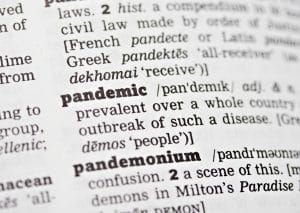This website uses cookies so that we can provide you with the best user experience possible. Cookie information is stored in your browser and performs functions such as recognising you when you return to our website and helping our team to understand which sections of the website you find most interesting and useful.

Susan E. Mazer, Ph.D. Blog
Thoughts and ideas on healthcare
Hi, and welcome to my blog! I'm Susan E. Mazer -- a knowledge expert and thought leader on how the environment of care impacts the patient experience. Topics I write about include safety, satisfaction, hospital noise, nursing, care at the bedside, and much more.
The Pandemic of Violence: A Health Issue
December 4, 2015
 The kind of trauma that we have watched just in the last month, beginning with Paris, then Mali, California, Georgia, and others — is no longer uncommon.
The kind of trauma that we have watched just in the last month, beginning with Paris, then Mali, California, Georgia, and others — is no longer uncommon.
Our communities and children are traumatized and terrorized.
Our politicians take their positions and hold their ground — one way or another, on gun violence, criminal justice, who to blame, who the real victims are.
We write and read and study about end-of-life decisions. We develop palliative care to walk patients through chronic illnesses. We have health coaches, chaplains, patient advocates, and others so that no one feels that they are so alone.
Then, life ends by either random or political violence — ends in some unexplainable, horrific way. How do we deal with that? How do we treat that? How do we fully understand how to stop a pandemic of violence so global, so local, and so horrific?
What happens in the hospital when patients watch this violence on TV? How do wounded warriors with PTSD react to it when they see it from their hospital bed?
Gary Slutkin, M.D., of the University of Chicago, has long claimed that violence is a contagious disease. He points to three characteristics of an infectious disease, namely clustering, spread, and transmission.
Clearly, the recent sequence of mass murders point to a global clustering of issues, causes, methods, and reactions. Also, the language about the violence becomes violent and inciting, which adds to the risk of spread.
Healing Environment Needed Now More Than Ever
A healing environment is responsive, resilient, and regenerative. It holds and protects us, promoting wellness and, in the hospital, aiding in recovery. It provides a safe haven in which we can deal with the vulnerabilities of illness, life, and death.
We need to protect patients, families, nurses, physicians, and staff from the bombardment of violent reruns brought on by commercial television.
We need to protect the sacred spaces of healing that make up our hospitals and clinics.
How caregivers do that involves what they do everyday in caring for patients and also being extraordinary sensitive to external events that can be most disturbing and distracting. As I have written in recent posts, turning the television to The C.A.R.E. Channel is one way to remove headline news from the patient’s bedside.
However, there is more that caregivers can do. Speaking with patients and families about what most matters to them and suggesting that other people are handling whatever is going on is also of great value.
The antidote to war is peace; the place to heal is a healing environment.
P.S. If you like this post, please do me a favor and share on LinkedIn, Twitter, Facebook, etc. Also to get automatic notices when a new post is published, subscribe (upper right). No spam – just great content. Thanks!










